The only church that most visitors to Versailles see is the Château’s own chapel. This is understandable, of course, because it’s the Château that people come to see. Today, however, we’re going to explore 2 churches in the town of Versailles, the Church of Our Lady (Notre-Dame) and the Cathedral of St. Louis.
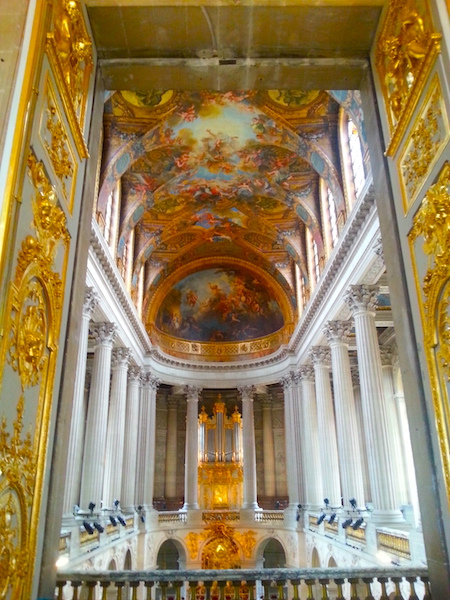
The interior of the chapel at the Château de Versailles.
Let’s begin with the older one, the Église Notre-Dame, or the Church of Our Lady.
This church was built quite early in the development of Versailles. It was erected by Jules Hardouin-Mansart (1646-1708) between 1684 and 1686, presumably in the time that he could spare from his work at the Château. Remember that Louis XIV had only moved into the Château for good in 1682.
Before the chapel that we see today was completed in 1710, there were other chapels in the Château, but the town needed a church, too, hence the construction of Notre-Dame in the Rue de la Paroisse. If you walk northward from the Château, you can make the church out as you approach the Place Hoche.
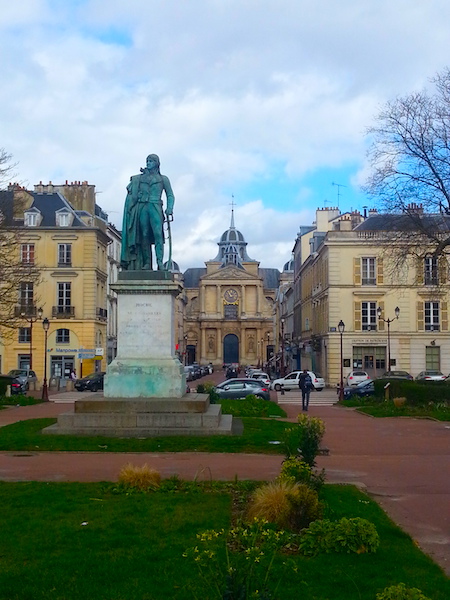
Place Hoche, with the Church of Our Lady (Notre-Dame), one of the 2 main churches of Versailles, clearly visible to the right of the statue.
The Church of Our Lady was in fact the parish church of the French kings as long as they lived at Versailles. As such, it had a suitably large sanctuary. Indeed, it’s larger than some cathedrals.
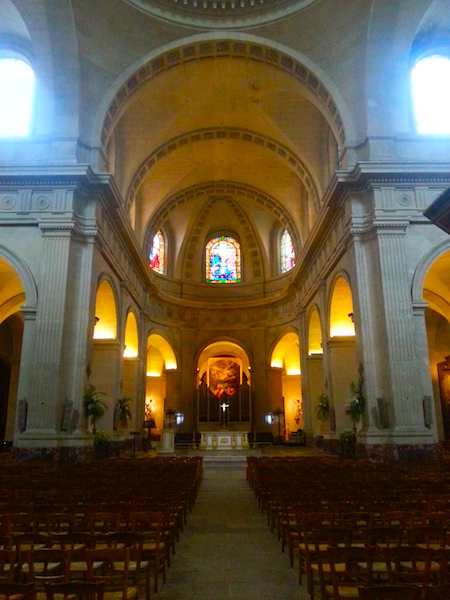
The interior of the Church of Our Lady (Notre-Dame) in Versailles.
Louis XIV famously loved music, and was surrounded by it all day, everywhere he went. No doubt he required a high standard of music in church, too. Perhaps that’s why this church is equipped with a particularly impressive organ.
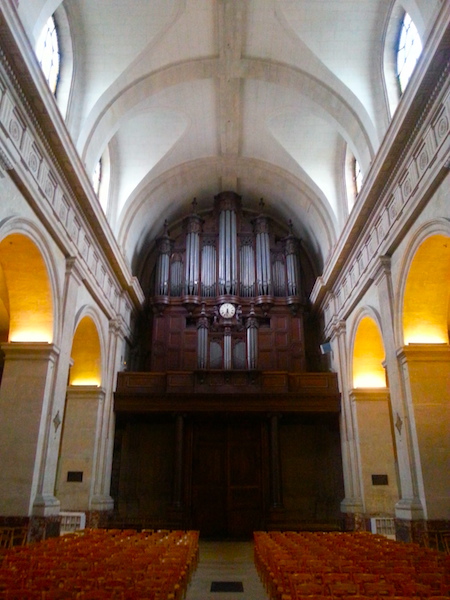
The organ of the Church of Our Lady (Notre-Dame) in Versailles.
The permanent settlement of the court at Versailles caused a property boom in the town. Louis XIV encouraged his nobles to build houses, and sweetened the pot by announcing that all such houses would be immune to confiscation by creditors. This was quite a significant inducement, since life at court was expensive and most courtiers lived above their means, thus becoming heavily indebted. Further down the social scale, the presence of the court generated the need for all manner of goods and services, thus attracting labourers, merchants, artisans, lawyers, etc. In other words, the once sleepy village of Versailles turned into a bustling town.
The population grew so much that by the middle of the 18th century another church in the town was needed. Louis XV decided to create a new parish south of the Château, near the Potager du Roi, to be called St. Louis. He laid the foundation stone of the new church in 1743 and it was finished by 1754.
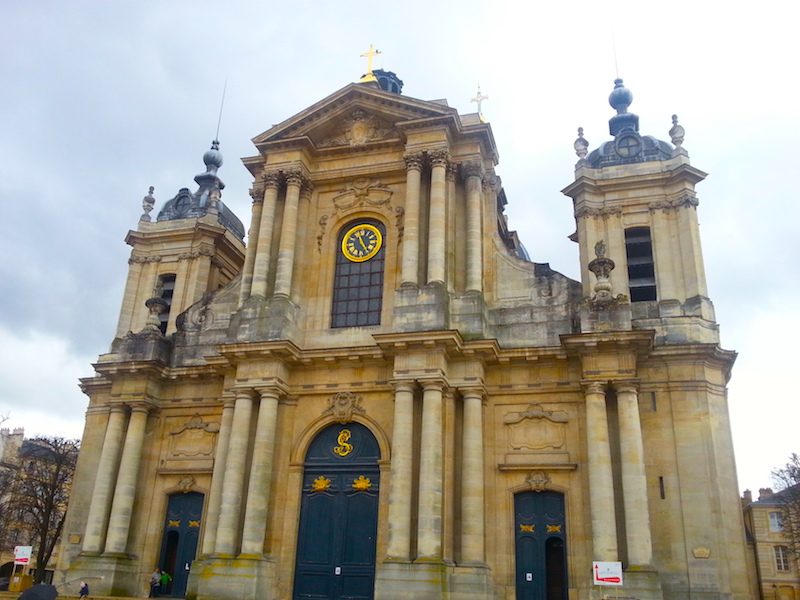
The facade of the Cathedral of St. Louis in Versailles, the second of the 2 main churches in Versailles.
The comparatively ornate facade masks a fairly austere interior.
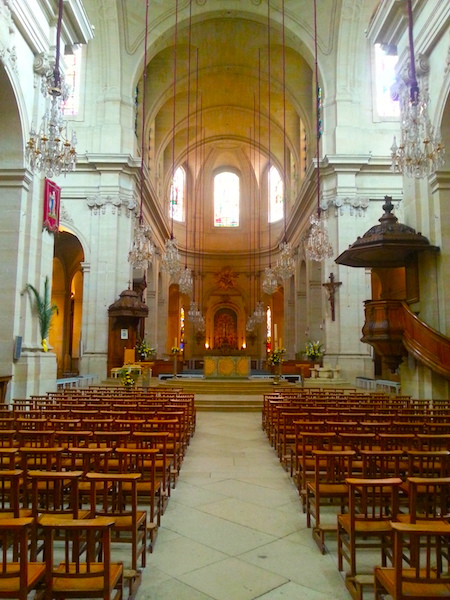
The interior of the Cathedral of St. Louis in Versailles.
Fittingly, the architect was Jacques Hardouin-Mansart de Sagonne (1711-1778), whose more famous grandfather designed the Church of Our Lady, not to mention the Château.
Versailles grew still more, and eventually got its own bishop. The church of St. Louis then became the cathedral of the diocese of Versailles.
There is another large church in the town, St. Symphorien’s, but I didn’t visit it and have no photos of it. A blog post about it will have to wait until I go back to Versailles.
I’m thinking of doing a post about things to see and do in the town of Versailles. Would that be of interest? Let me know in the comments, or on the Facebook page, or on Instagram. Just click the icon of your preferred social medium on the main page of the blog.







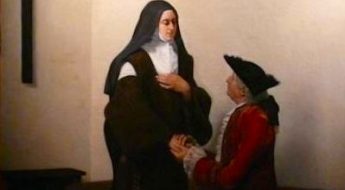
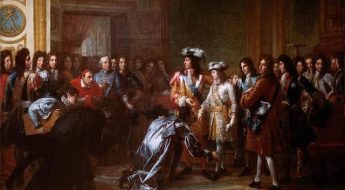








Leave a Comment